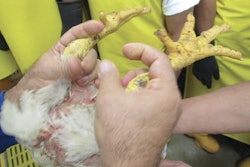
The world’s best performing poultry industries are presently in the United States, Mexico, Japan and Russia, according to the Rabobank Poultry Quarterly Q2 2021 report. Meanwhile, the report identified the European Union, South Africa and Thailand as the industries that are struggling due to an oversupply.
United States
According to the report, the U.S. is experiencing stronger demand for boneless, skinless breast meat. That market strength reflects not only newly introduced chicken sandwiches in the quick service restaurant sector, but also inventory replenishment as the industry anticipates further opening of the foodservice sector.
Leg quarter prices have improved as export demand from key markets in Mexico, China and Cuba helped strengthen those prices.
Mexico
Mexican chicken demand is strengthening as consumers seek lower-cost proteins. The gradual reopening of grocery and foodservice outlets have also helped stabilize demand.
Japan
While Japan went through several periods of restrictions on people’s movements due to the COVID-19 pandemic, in most cases they were done on a regional and voluntary basis, in contrast to the situation in other Asian countries.
There was still a shift from retail to eating at home in Japan, but restaurants have mostly been able to stay open until early evening.
The start of COVID-19 vaccination and the upcoming Olympic games will also play a factor in demand for chicken in Japan.
Russia
Russia’s poultry market has shown a remarkable change during the first two months of 2021, the report stated, with poultry prices up by 35% in February 2021, compared to the previous years. Feed prices, avian flu and a disruptive breeding supply chain attributed to higher prices. Other food prices have been high.
European Union
The poultry market in the EU has recovered slightly since a year ago, as chicken prices rose about 5% in early March. But the price increase was not enough to offset high feed prices.
Since the start of the COVID-19 pandemic, monthly poultry production has been consistently above 2019 levels, while consumption dropped due to lockdowns and restrictions on movements. Demand from the foodservice industry will be key for the EU poultry industry’s recovery.
South Africa
The biggest challenge for the South African industry since the start of COVID-19 pandemic has been to fine-tune the supply to the volatile demand. Restrictions on movements because of the pandemic created volatility in demand, especially at the retail level. The government and the poultry industry were also in the process of expanding local production as part of a master plan, which has resulted in a 7% increase in production.
The outlook is for gradual improvement, as foodservice is expected to improve amid a low COVID-19 alert level and the stabilization of feed prices.
Thailand
The poultry industry in Thailand was challenged by the many global lockdowns and the collapse of the tourism industry in the country.
Many importing countries have had new waves of COVID-19 cases with falling foodservice demand. Broiler prices have also dropped, squeezing margins. The outlook will depend on the recovery of foodservice in Japan, the EU and the UK, which are big importers of Thai chicken.
















